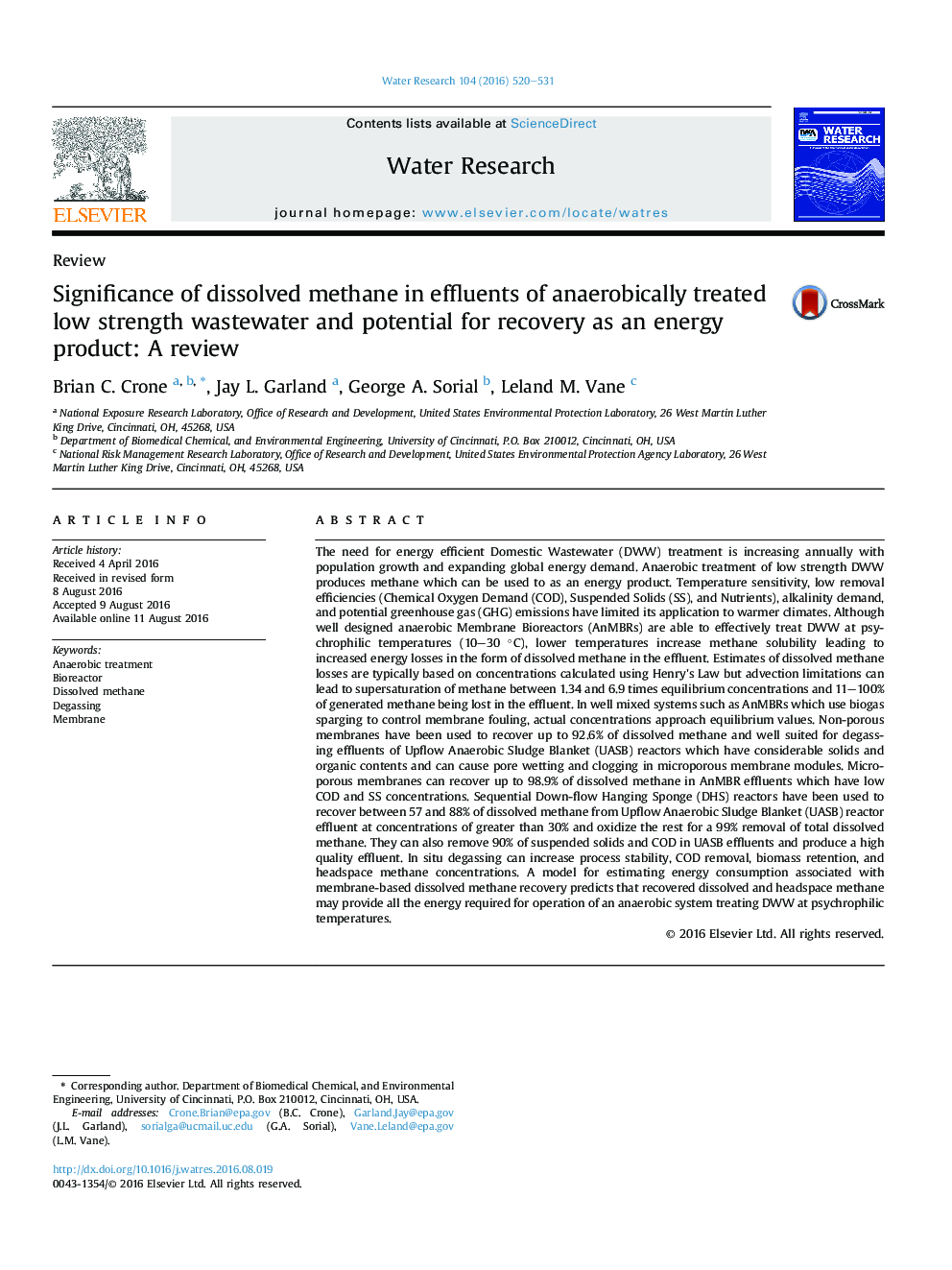| کد مقاله | کد نشریه | سال انتشار | مقاله انگلیسی | نسخه تمام متن |
|---|---|---|---|---|
| 6364662 | 1623064 | 2016 | 12 صفحه PDF | دانلود رایگان |
- Anaerobic systems can lose between 11 and 100% of generated methane in the effluent.
- Membrane systems can recover up to 98.9% dissolved methane.
- Microporous membranes may ares suitable for AnMBR effluent degassing.
- Down Hanging Sponge reactors can efficiently recover dissolved methane and produce a high quality effluent.
- Net-zero wastewater treatment may be achieved with dissolved methane recovery.
The need for energy efficient Domestic Wastewater (DWW) treatment is increasing annually with population growth and expanding global energy demand. Anaerobic treatment of low strength DWW produces methane which can be used to as an energy product. Temperature sensitivity, low removal efficiencies (Chemical Oxygen Demand (COD), Suspended Solids (SS), and Nutrients), alkalinity demand, and potential greenhouse gas (GHG) emissions have limited its application to warmer climates. Although well designed anaerobic Membrane Bioreactors (AnMBRs) are able to effectively treat DWW at psychrophilic temperatures (10-30 °C), lower temperatures increase methane solubility leading to increased energy losses in the form of dissolved methane in the effluent. Estimates of dissolved methane losses are typically based on concentrations calculated using Henry's Law but advection limitations can lead to supersaturation of methane between 1.34 and 6.9 times equilibrium concentrations and 11-100% of generated methane being lost in the effluent. In well mixed systems such as AnMBRs which use biogas sparging to control membrane fouling, actual concentrations approach equilibrium values. Non-porous membranes have been used to recover up to 92.6% of dissolved methane and well suited for degassing effluents of Upflow Anaerobic Sludge Blanket (UASB) reactors which have considerable solids and organic contents and can cause pore wetting and clogging in microporous membrane modules. Microporous membranes can recover up to 98.9% of dissolved methane in AnMBR effluents which have low COD and SS concentrations. Sequential Down-flow Hanging Sponge (DHS) reactors have been used to recover between 57 and 88% of dissolved methane from Upflow Anaerobic Sludge Blanket (UASB) reactor effluent at concentrations of greater than 30% and oxidize the rest for a 99% removal of total dissolved methane. They can also remove 90% of suspended solids and COD in UASB effluents and produce a high quality effluent. In situ degassing can increase process stability, COD removal, biomass retention, and headspace methane concentrations. A model for estimating energy consumption associated with membrane-based dissolved methane recovery predicts that recovered dissolved and headspace methane may provide all the energy required for operation of an anaerobic system treating DWW at psychrophilic temperatures.
Primary fuel to unit operation energy conversion process.168
Journal: Water Research - Volume 104, 1 November 2016, Pages 520-531
